Gynaecology and Obstetrics Hospital in Hyderabad
The Institute of Gynaecology and Obstetrics at Yashoda Hospitals offers medical care and support to women at every stage in their lives. We at Yashoda Hospitals aim to treat all obstetric and gynaecological health issues from pre-pubescent to menopause. Yashoda Hospitals with a team of reputed doctors and surgeons in a state-of-the-art facility specialises in addressing the gynecological needs of the women and offer comprehensive medical, diagnostic & surgical expertise. The institute is the one-stop multispecialty centre that deals with the health of the female reproductive system. Our team of gynaecologists foster a supportive, understanding and caring environment where a woman can expect the best care and advice.
The Institute of Gynaecology and Obstetrics at Yashoda Hospitals provides services for the reproductive health and gynaecological needs in a comprehensive, advanced, compassionate and dedicated manner with highest emphasis on patient safety. The institute has deep experience in diagnosing and treating women with a wide range of conditions and diseases of the reproductive and urinary systems. Specialists in obstetrics and gynecology at Yashoda Hospitals treat menstrual disorders, menopause, urinary incontinence, uterine, gynecological cancers, abnormal pap smears and more.
Our advanced obstetric and maternity services help you bring your little one into the world safely and comfortably
We are a excellence for maternity care, providing a comprehensive service of pregnancy – antenatal, childbirth & post-natal. Our highly trained doctors specialize in painless delivery, high-risk pregnancy & high-risk newborn care. Our experienced teams help you have an enjoyable pregnancy and birth experience, and guide you in making the choices that best fit your needs. The center is the most comprehensive center for delivery or childbirth in the region, with expertise in high-risk pregnancy.
Normal to high-risk pregnancies are managed with the expert team of obstetricians and support team.
Robotic Gynaecology Hospital in Hyderabad
The Institute of Obstetrics and Gynecology has a team of expert doctors and surgeons who use the latest diagnostic techniques to work in multidisciplinary teams to develop an individual treatment plan for each individual after an intensive assessment. The services range from simple daycare to the most advanced minimally invasive surgeries such as laparoscopic & robot-assisted surgeries for several gynecological procedures.
Women’s Well-being & Rehabilitation Physiotherapy Program
Gynecology
Women’s health physical therapy is an area of physical therapy that in the unique needs of women throughout their lives. Most gynecological diseases require multidisciplinary treatment. Physical therapy is important but often overlooked. With core muscle strength training for core muscles in abdomen, pelvic floor, and hips, several pelvic diseases and their symptoms may be managed. Physical therapy practitioners also help women with problems concerning sexual intercourse, urination, fertility, and cancer recovery.
Obstetrics
We offer physical therapy for pregnancy preparedness and postpartum recovery. A prenatal and postnatal regimen risk for future complications, sections, pelvic floor, and posture.
Meet Our Top Obstetrics and Gynaecology Doctors
This center of excellence for women’s health offers international standard gynaecology and obstetric care from early pregnancy to post-natal support. It features one of Hyderabad’s premier high-risk pregnancy teams, supported by skilled nurses and expert obstetric and gynaecology doctors, along with several critical care units, such as a modern delivery suite and a dedicated fetal medicine unit. Our services range from preventing and managing menstrual disorders to taking optimal care of newborns, delivered through a multidisciplinary approach.

Dr. Anitha Kunnaiah
18 Years Of Experience
Senior Consultant Obstetrician & Gynaecologist, Laparoscopic & Robotic Surgeon, and Infertility Specialist
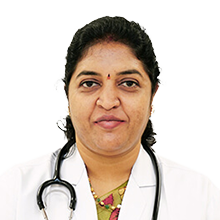
Dr. Madhavi Reddy Vennapusa
18 Years Of Experience
Sr. Consultant Obstetrician and Gynaecologist

Dr. Bagyalakshmi A.D.S
32 Years Of Experience
HOD, Obstetrician – Gynaecologist, Laparoscopic & Robotic Surgeon

Dr. M. V. Jyothsna
16 Years Of Experience
Consultant Obstetrician & Gynaecologist

Dr. Krishnaveni Nayini
25 Years Of Experience
Senior Consultant Obstetrician & Gynaecologist

Dr. Sarada M
25 Years Of Experience
Sr. Consultant Obstetrician & Gynecologist, Laparoscopic & Robotic Surgeon
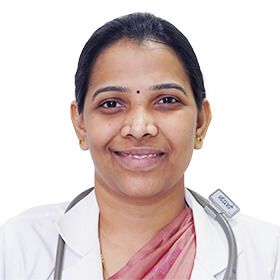
Dr. Lepakshi Dasari
13 Years Of Experience
Consultant Gynaecologist & Laparoscopic Surgeon
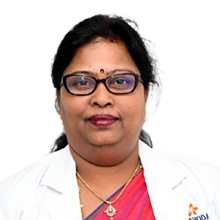
Dr. S. Shantha Kumari
26 Years Of Experience
Consultant Obstetrician, Gynaecologist & Laparoscopic Surgeon
Best Hospitals for Comprehensive Gynaecological Treatments
Yashoda Hospitals performs routine medical screenings and surgical procedures on the female reproductive system, including the vagina, cervix, uterus, fallopian tubes, and ovaries. Our team of highly skilled gynaecologists assesses each condition, offering a wide range of treatments and advising the best approach based on the patient’s symptoms and age. Common gynaecological treatments at Yashoda Hospitals include hysterectomy and various keyhole (laparoscopic) surgeries.
The Types of Treatments and Surgeries Offered at Yashoda Hospitals:
- Laparoscopic-assisted Vaginal Hysterectomy
- Total Laparoscopic Hysterectomy (TLH)
- Myomectomy
- Trachelectomy
- Vulvectomy
- Laparotomy
- Oophorectomy
- Reconstructive Pelvic Surgery
- Uterine Artery Embolisation (UAE)
- C-Section and Normal Delivery
- Fertility Treatments
- Laparoscopic Ovarian Drilling
- Hysteroscopy
- Laparoscopic Ovarian Cystectomy
- Pelvic Organ Prolapse Repair
Surgical Steps
- The surgeon makes a few small incisions in the abdomen to insert a laparoscope and several specialised tools.
- The laparoscope provides a live, magnified view of the pelvic region on the screen, and using the laparoscopic instruments, the uterus, ligaments, and blood vessels are detached completely.
- Once thoroughly separated, the uterus is removed through the vagina, followed by the closure of the abdominal or vaginal incisions with stitches.
Benefits:
- Reduced pain
- Quick recovery
- Smaller incisions
- Little to no blood loss
- Reduced risk of complications
- Better aesthetic results
Surgical Steps
- The surgeon utilises a laparoscope that is inserted through a small incision made in the abdomen to visualise and remove the cervix and the uterus, and sometimes the fallopian tubes or ovaries may get involved, followed by the closure of the vaginal cuff.
Benefits:
- Reduced scarring and blood loss
- Cost-effective
- Faster recovery
- Lower risk of complications
- Less post-operative pain and discomfort
Read more about – Total Laparoscopic Hysterectomy
Surgical Steps
- Open Myomectomy: This traditional method involves making a larger incision in the abdomen to access and remove the uterine fibroids.
- Laparoscopic Myomectomy: This minimally invasive technique involves a smaller incision and a laparoscope to guide and remove the uterus.
- Robot-assisted Myomectomy: This method is the same as laparoscopic myomectomy, where it utilises two robotic arms remotely controlled by a surgeon to precisely remove the fibroids.
Benefits:
- Better fertility-preserving option
- Alternative to hysterectomy
- Reduced risk of complications
- Imparts quick recovery
Read more about – Myomectomy
Preview: Trachelectomy treats early-stage cervical cancer while preserving the possibility of future pregnancy by keeping the uterus intact and removing the cervix and other surrounding organs, while objectively maintaining normal hormonal functions, since the preservation of the uterus allows for normal hormonal functioning.
Surgical Steps
- Trachelectomy can be performed vaginally, openly, laparoscopically, or using a minimally invasive technique.
- In radical trachelectomy, depending on the stage of the cancer, a pelvic lymph node dissection is performed to assess the cancer and remove the affected lymph nodes.
Benefits:
- Better alternative to hysterectomy
- Preserve fertility
- Reduced risk of complications
Types of Surgeries
- Wide Local Excision Vulvectomy: Cancer is removed along with the margin of healthy tissues surrounding the tumor.
- Simple Vulvectomy: This procedure removes the entire vulva along with the clitoris.
- Skinning Vulvectomy: A superficial layer of the vulva is removed.
- Modified Radical Vulvectomy: This procedure removes an entire vulva with selected lymph nodes.
Benefits:
- Cost-effective
- Relieves symptoms
- Lowers the chances of recurrence
- Sentinel lymph node biopsy
Read more about – Vulvectomy
Surgical Steps
- The surgeon makes an incision on the abdomen from the midline to visually inspect the organs for any abnormalities or diseases under the influence of general anesthesia.
- They may take a biopsy or perform surgeries based on the findings, like tumors or damaged organs, or to drain the abscess.
- The recovery may take up to several weeks, depending on the number of hospital stays and the extent of the procedure.
Benefits:
- Performs quickly in emergency cases
- Effective for complex cases
- Less reliance on specialised tools
Read more about – Laparotomy
Surgical Steps
- During the surgery, the surgeon, under the influence of general anesthesia, surgically removes the ovaries and fallopian tubes via a small abdominal incision, utilizing laparoscopic, robotic, and open surgeries.
- The patient may receive instruction for pain management and wound care with follow-up appointments and is required to follow their advice on diet, activities, and prescriptions for a smooth recovery.
- The procedure may last for 1-2 hours, depending on the severity of the conditions, surgical approach, and the patient’s overall health and age, whereas initial recovery may take up to 1-2 weeks.
Benefits:
- Immediate symptom relief
- Reduced need for future surgery
- Cancer risk reduction
- Improved quality of life
Read more about – Oophorectomy
Surgical Steps
There are common types of reconstructive plastic surgical procedures, namely pelvic floor reconstruction, vaginal reconstruction, native tissue repair, mesh-based repair, and sacrocolpopexy.
Benefits:
- Improved quality of life
- Long-term relief
- Enhanced quality of life
- Minimally invasive option
Preview: Uterine artery or uterine fibroid embolisation (UAE/UFE) is a nonsurgical alternative to hysterectomy or myomectomy. It aims to treat uterine fibroids by blocking their blood supply and making them shrink, alleviating symptoms like pain and heavy bleeding.
Surgical Steps
- A contrast dye is injected into the bloodstream to visualise blood vessels on an X-ray film and help diagnose the affected uterine arteries.
- Tiny particles (embolic agents/microspheres) are injected into the uterine arteries via the catheter, causing blockage of the blood flow to the fibroids and allowing them to shrink and reduce symptoms over time.
Benefits:
- Minimally invasive
- Uterus preservation
- Reduced risk of complications.
- Immediate symptom relief
- Cost-effective
Read more about – Uterine Artery Embolisation
Surgical Preparations for Delivery
- When preparing for childbirth, the patient must have all the medical records, discuss presurgical or postsurgical medication and vaccinations, and wear comfortable clothing, always carrying a relaxing kit.
- Consult with your doctor to manage high-risk conditions such as preeclampsia or gestational diabetes and recognise any membrane rupture or contractions.
- Recovery after childbirth through a C-section requires a gynecologist’s assistance with instructions like avoiding heavy lifting and strenuous activity to promote healing.
Benefits:
- Allows precise tracking of time for the delivery
- Reduces the risk of pain during birth, injury to the vagina, and loss of bladder control.
- Faster recovery
- Shorter hospital stay
- Makes breastfeeding easier
Read more about – C-sections & Normal Childbirth
Surgical Treatment Types:
- Egg Retrieval Process: a needle-guided ultrasound procedure where the needle is inserted through the vaginal wall into the follicles and continues the aspiration of the egg present in the follicular fluid.
- Surgical Sperm Retrieval: The surgeons obtain the sperm from the reproductive tract when they are absent from the ejaculate through sperm aspiration procedures.
- Tubal Ligation Reversal Procedure: This process involves joining the two cut ends of the fallopian tubes.
Benefits:
- Minimises risks
- Control over timing
- Increases chances of conception
- Address expanding reproductive options
Read more about – Fertility Treatments
Surgical Steps
- The surgeon, after administering general anaesthesia and performing LOD laparoscopically to visualise the ovaries from one of the small incisions, uses a laser or electrocautery device to drill multiple small holes at the outer surface of the ovary.
Benefits:
- Increased pregnancy rates
- Reduced needs for fertility medications
- Reduced risk of ovarian hyperstimulation syndrome (OHSS)
- Potentially long-term durable
Surgical Steps
- The surgeon inspects the uterus after inserting the hysteroscope into the cervix and targets the necessary treatments, followed by the insertion of the MyoSure device through the hysteroscope to treat the targeted tissue area, such as removing polyps or correcting septa.
- This device utilises a rotating blade and suction to diagnose, remove, or correct the abnormality.
- Under the influence of general anesthesia, the surgery typically lasts for 5 minutes to 30 minutes, depending on the complexity and technique of the procedure.
Benefits:
- Performed in an office setting for diagnosis
- Minimally invasive with shorter recovery time
- Reduces the need for extensive surgeries
- Precisely address the uterine abnormalities
Read more about – Hysteroscopy
Surgical Steps
Under general anesthesia, a laparoscope and a few specialised tools are inserted through the small abdominal incisions, inflating the abdomen with carbon dioxide for visibility and removing the cyst, followed by the closure of the incision with dissolvable stitches.
Benefits:
- Minimizes tissue damage, improving fertility chances.
- Reduces pelvic pain and pressure.
- Reduces the risk of complications caused by the cyst.
- Helps in regulating the menstrual cycle.
Read more about – Ovarian Cystectomy
Surgical Steps
- The surgeon evaluates and determines the type and severity of the prolapse, assesses the patient’s overall health and discusses treatment planning together.
- POP repair is performed under general anesthesia either through a vaginal approach (anterior and posterior colporrhaphy, or sacrospinous ligament fixation), abdominal approach (sacrocolpopexy, hysterectomy with uterosacral ligament suspension), or laparoscopic/robot-assisted approach.
Benefits:
- Reduced bulging and pressure
- Improved bladder and bowel function
- Enhanced sexual function
- Alleviation of pelvic pain and dyspareunia
Advanced Gynaecological Conditions and Comprehensive Measures
The Gynaecology Hospitals in Hyderabad and the Obstetrics Institute of Yashoda Hospitals specialise in diagnostic, clinical, and preventive care for women’s sexual health issues, as we offer well-formulated clinics and awareness programs for counseling and disease prognosis.
Gynaecological disorders affect the internal and external organs in the female pelvic and abdominal areas. Common symptoms include heavy periods, bleeding between periods, irregular periods, pelvic pain during or between periods, and irregular discharge. Consult our obstetrics and gynaecology doctors for any signs and symptoms concerning the female reproductive system.
Here Are Some Common Gynaec Diseases and Conditions:
- Endometriosis
- Ovarian Cysts
- Bartholin's Cyst
- Sexual Dysfunction
- Abnormal Uterine Bleeding/Irregular Vaginal Bleeding
- Menopause and Perimenopause
- Uterine Fibroids
- Infertility
- Miscarriage
- Bacterial Vaginosis (BV)
- Chronic Pelvic Pain
- Dysmenorrhea (Painful Periods/Cramps)
- Amenorrhea
- Menorrhagia
- Vaginal Candidiasis
- Estrogen Deficiency State
- Pelvic Inflammatory Disease (PID)
- Vaginitis
- Cervicitis
- Sexually Transmitted Infections (STIs/STDs)
- Genital Herpes
- Polycystic Ovarian Syndrome (PCOS)
- Pre-menstrual Syndrome (PMS)
- Post-menopausal Bleeding (PMB)
- Pelvic Organ Prolapse (POP)
Symptoms of Endometriosis:
- Dysmenorrhea
- Dyspareunia
- Painful urination or bowel movements
- Infertility
Causes for Endometriosis:
- Retrograde menstruation
- Genetic factors
- Higher estrogen levels
- Dislodgement of the endometrial mass after any abdominal surgery
Symptoms of Ovarian Cysts:
- Dyspareunia (pain during sexual intercourse)
- Difficulty conceiving
- Acute pelvic pain
- Bloating
- Feeling full after eating small amounts
Causes for Ovarian Cysts:
- Polycystic Ovary Syndrome (PCOS)
- Endometriosis
- Pelvic inflammatory disease
Read more about – Ovarian Cysts
Symptoms of Bartholin’s Cyst:
- Visible lumps
- Swelling
- Discharge
- Redness
Causes for Bartholin’s Cyst:
- Blockages of the Bartholin gland duct
- Sexually transmitted diseases like chlamydia
- Prolonged irritation or injury
Read more about – Bartholin’s Cyst
- Erectile dysfunction
- Low libido count
- Problems having an orgasm
- Painful intercourse
Causes for Sexual Dysfunction:
- Cardiovascular issues: High blood pressure or high cholesterol
- Neurological conditions: Parkinson’s disease or multiple sclerosis
- Diabetes hormonal imbalance
- Psychological issues: Anxiety and depression, body image consciousness, performance anxiety
Symptoms of Abnormal Uterine Bleeding:
- Prolonged menstrual period
- Bleeding after intercourse
- Bleeding after menopause or between periods
- Irregular menstrual cycle
- Heavy menstrual bleeding
Causes for Irregular Vaginal Bleeding:
- Thyroid disorders
- Bleeding disorders
- Failure to ovulate
- Polycystic ovary syndrome (PCOS)
- Uterine fibroids or polyps
- Endometrial hyperplasia or cancers
Common Symptoms of Menopause and Perimenopause:
- Mood changes
- Bone loss
- Changes in sexual tension
- Vaginal and bladder problems
- Hot flashes and night sweats
Common Causes for Menopause and Perimenopause:
- Cancer surgery or radiation exposure
- Smoking
- Hysterectomy
- Genetic factors
- Prolonged menstrual bleeding
- Bleeding between periods
- Frequent urination
- Difficulty emptying the bladder
- Dyspareunia (pain during sexual intercourse)
Causes of Uterine Fibroids:
- Changes in the hormones, such as estrogen and progesterone levels
- Miscellaneous factors like vitamin D deficiency, alcohol and red meat consumption.
- Genetic predisposition
- Dyspareunia (pain during sexual intercourse)
- Inability to conceive
- Hormonal imbalance symptoms
- Changes in hair growth and sexual functions
- Problems with ejaculation and maintaining an erection
Causes for Infertility:
- Tubal damage or blockage
- Ovulation disorders
- Hormonal imbalances
- Certain chemical and radiation exposure
Symptoms of Miscarriage:
- Vaginal bleeding
- Lower back pain accompanied by cramps
- Decreased pregnancy symptoms
Causes for Miscarriage:
- Chromosomal abnormalities
- Uncontrolled thyroid issues or diabetes
- Autoimmune diseases
- Hormonal imbalances
- Fishy odour
- Itching or irritation in the vagina
- Burning sensation when urinating
- Thin white or grey vaginal discharge
- Burning sensation while urinating
Causes for Bacterial Vaginosis:
- Abnormal bacterial growth in the vagina
- Douching
- New or multiple sex partners
- Smoking
- Have had previous BV treatment
- Sharp stabbing or dull and aching pain
- Pain during intercourse
- Urinary and bowel problems
Causes for Chronic Pelvic Pain:
- Endometriosis
- Uterine fibroids
- Pelvic inflammatory disease (PID)
Read more about – Chronic Pelvic Pain
Symptoms of Dysmenorrhea:
- Cramping or throbbing pain
- Sleep disturbances
- Irritability
- Constipation
- Lethargy
Causes for Dysmenorrhea:
- High levels of prostaglandins
- Endometriosis
- Fibroids
- Adenomyosis
- Pelvic inflammatory disease
- Crohn’s disease
- Ovarian cysts
Symptoms of Amenorrhea:
- Hot flashes
- Leaking areola
- Absence of a menstrual period
- Changes in the vision
Causes for Amenorrhea:
- Pituitary gland issues
- Thyroid disorders
- Polycystic ovary syndrome (PCOS)
- Eating disorders
- Less body weight
- Menopause
- Heavy menstrual flow
- Prolonged periods
- Large blood clots
- Urgency to change the pad at night
Causes for Menorrhagia:
- Uterine fibroids and polyps
- Thyroid disorders, kidney or liver disease, or blood disorders
- Uterine cancers or ectopic pregnancy
- Rarely IUD devices
- Intense and persistent itching
- Irritation
- Burning sensation while urinating or having intercourse
- Cottage-cheese like thick, white, and clumpy vaginal discharge
- Dyspareunia
- Dysuria
Causes for Vaginal Candidiasis:
- Antibiotic usage
- Hormonal changes during pregnancy
- Uncontrolled diabetes
- Weakened prescriptions due to HIV or medical prescriptions
- Changes in the estrogen levels
- Douching or tight-fitting clothes can cause irritation
Symptoms of Estrogen Deficiency State:
- Hot flashes and night sweats
- Menstrual irregularities
- Vaginal dryness
- Reduced libido
- Sleep disturbances
Causes of Estrogen Deficiency State:
- Ovaries produce less estrogen with age.
- Premature ovarian failure.
- Medical conditions: pituitary or thyroid disorders, or Turner syndrome.
- Lifestyle changes: eating disorders like anorexia or bulimia.
- Surgeries: removal of ovaries (oophorectomy), chemotherapy and radiation therapy.
Read more about – Estrogen Deficiency State
- Lower abdominal pain
- Pain in the upper right abdomen
- Cervical motion tenderness
Causes for PID:
- Sexually transmitted infections
- Spreading from the Cervix
- Vaginal discharge
- Itching and burning
- Pain or discomfort
- Redness and swelling
Causes for Vaginitis:
- Yeast infection
- Low estrogen levels
- Allergic reaction or irritation
- Low estrogen levels
- Bacterial infection: greyish-white, fishy-smelling discharge
- Trichomoniasis with greenish-yellow, sometimes frothy, discharge
- Painful intercourse
- Abnormal vaginal discharge
- Painful or frequent urination
- Bleeding between periods or after intercourse
Causes for Cervicitis:
- Sexually transmitted infections
- Allergic reactions to the spermicides or latex condoms
- High-risk sexual behaviour
- Trauma to the cervix
Symptoms of STDs:
- Genital sores or bumps
- Painful urination or intercourse
- Unusual discharge from the vagina
- Skin rashes
- Swollen lymph nodes
Causes for STIs:
- Bacterial: Chlamydia, syphilis, gonorrhoea
- Viral: Human papillomavirus, herpes simplex virus, human immunodeficiency virus
- Parasitic (Trichomonias)
Symptoms of Genital Herpes:
- Sores and blisters
- Itching or tingling sensation
- Painful urination
- Unusual vaginal discharge
- Flu-like symptoms
Causes for Genital Herpes:
- Herpes simplex virus (HSV-1 or HSV-2)
- Sexual contact
- Skin-on-skin contact
Read more about – Genital Herpes
- Irregular or absent period
- Hirsutism (excessive hair)
- Male-pattern baldness
- Mood changes
- Weight gain
- Darkened skin patches and acne
Causes for PCOS:
- Genetic predisposition
- Insulin Resistance
- Reproductive hormone imbalance, such as elevated testosterone or luteinizing hormone (LH) and depleted follicle-stimulating hormone.
Read more about – Polycystic Ovarian Syndrome
Symptoms of PMS:
- Mood swings and irritability
- Nervousness and Anxiety
- Sadness or crying spells
- Difficulty concentrating
- Changes in appetite
- Migraines and headaches
- Breast swelling and tenderness
Causes for PMS:
- Cyclic changes in the estrogen or progesterone levels
- Fluctuations in the brain chemicals, like serotonin
- Individual threshold levels
- Underlying mental health conditions
- Pain and discomfort
- Urinary problems
Causes for PMB:
- Endometrial atrophy (thinning or drying of the vaginal canal lining)
- Endometrial hyperplasia (thickening of the uterine wall)
- Uterine fibroids or polyps
- Vaginal or uterine infections
Read more about – Post-menopausal Bleeding
Symptoms of Pelvic Organ Prolapse:
- Urinary incontinence
- Difficulty inserting tampons
- Constipation or faecal incontinence
- Prominent bulging through the vaginal opening
- Dragging in the lower abdomen or a feeling of fullness
Causes for Pelvic Organ Prolapse:
- Obesity
- Aging factor
- Multiple or prolonged vaginal deliveries
- Hysterectomy or multiple pelvic surgeries
- Reduced estrogen levels after menopause
- Chronic coughing or constipation causing pressure on the pelvic floor
- Connective tissue disorders like Marfan’s syndrome and Ehlers-Danlos syndrome
Best Gynaecology Hospital in Hyderabad with Advanced Technologies
The Institute of Obstetrics and Gynaecology at Yashoda Hospitals utilises advanced technologies and facilities, including state-of-the-art operation theatres, to manage a wide range of complex cases. This includes providing a full range of gynaecological treatment services through minimally invasive and laparoscopic techniques.
Our team of adept obstetric and gynaecology doctors collaborates to handle complex conditions and deliver compassionate, high-quality care, aiming for positive outcomes and affordable treatment prices for women at the best hospital for gynaecology in South India.
Here’s the List of Yashoda’s Advanced Technologies and Facilities:
- Ultrasound/USG
- Fluoroscopy
- Fetal Monitors
- Robotic Surgery
- Advanced Labour Rooms
- Maternity Suites
- Minimally Invasive Surgical Units
- Emergency Obstetric Care Unit
Why is it performed?
Ultrasound, also known as sonography or USG, visualizes and assesses the female reproductive organs, such as the uterus, ovaries, and fallopian tubes, to identify fibroids, polyps, and other structural abnormalities and detect cysts, tumours, and ovarian reserves. It’s commonly used to diagnose and monitor, and as a guidance procedure during chronic pelvic pain, abnormal bleeding, fertility issues, and pregnancy complications.
Advantages:
- Non-invasive and safe
- Real-time imaging
- Diagnostic capabilities
- Cost-effective
- Point-of-care applications
Read more about – Ultrasound
Why is it performed?
Fluoroscopy aims to visualize and assess the female reproductive organs, like the uterus and fallopian tubes, during procedures like hysterosalpingography (HSG) to diagnose infertility, assess tubal patency (whether the fallopian tubes are open or blocked), and fallopian tube recanalization.
Advantages:
- Guidance for procedures
- Real-time imaging
- Minimally invasive
- Reduced need for surgery
Read more about – Fluoroscopy
Why is it performed?
It aims to assess the well-being of the fetus during pregnancy and labour by detecting abnormal fetal heart rate or any fetal distress. It can be used to constantly monitor the fetus and prevent adverse outcomes like stillbirth, neonatal morbidity, and mortality.
Advantages:
- Early detection of fetal distress
- Informed decision-making
- Monitor during high-risk pregnancies
- Provides reassurance for the mother
Why is it performed?
Its modern approach enhances precision, visualization, and minimally invasive techniques, making complex surgeries like myomectomy, hysterectomy, and oophorectomy more effective and time-efficient.
Advantages:
- Enhanced precision and dexterity
- Reduced pain and scarring
- Faster recovery and return to activities
- Reduced risk of infections
Read More about – Robotic Surgery
Advanced labour rooms provide specialized care during childbirth by aiming to reduce maternal and newborn mortality and morbidity. They are well-equipped for normal and complex delivery procedures and specialised neonatal support.
Advantages:
- Monitors the baby with a fetal monitor.
- Specialised teams take care of breathing difficulties and malformations at birth.
- Allows more flexibility for any surgical technique
Advanced maternity suites provide personalized care to women throughout their pregnancy, childbirth and postpartum period, focusing specifically on their unique motherly needs. It involves all the prenatal checkups, delivery services and postpartum care, including the management of ectopic pregnancy or hyperemesis gravidarum.
Advantages:
- Enhanced comfort and privacy
- Shorter hospital stays
- Impart natural pain relief
- Invites lower intervention rates
- Cultural and personal preferences
Why is it performed?
Minimally Invasive Surgical Units (MISU), or minimal access gynaecological surgery (MAGS), aim for a less invasive alternative by utilizing specialized instruments and techniques (laparoscopy, hysteroscopy, and robotic surgery). Commonly treated conditions using these units are uterine prolapse, ectopic pregnancy, endometriosis, fibroids, and ovarian cysts.
Advantages:
- Reduced pain
- Minimal scarring
- Shorten recovery time
- Improves cosmetic outcome
Address life-threatening issues throughout the pregnancy, childbirth, and postpartum phases. It aims to provide life-saving surgical interventions for conditions such as eclampsia, preeclampsia, or other infections.
Advantages:
- Reduced maternal and neonatal mortality
- Immediate access to important services
- Makes the management of complications easier
- Cost-effective
- Promotes patient satisfaction
Leading Gynaecology Hospitals in Hyderabad with Advanced Diagnosis
At Yashoda, the best hospital for gynaecology, our specialised team of obstetric and gynaecological doctors, including urogynaecologists, OB-GYNs, surgical oncologists, and urologists, utilises the latest laboratories and tests to diagnose, treat, and prevent a comprehensive range of conditions and other malignancies. Our preventive and innovative gynaecological services are designed to maintain and improve overall patient health by combining advanced technology, specialised expertise, and a comprehensive set of diagnostics.
Lists of Diagnostic Tests Available at Yashoda Hospitals:
- Loop Electrosurgical Excision Procedure (LEEP)
- Endometrial Biopsy
- Sonohysterogram
- IUD Insertion & Removal
- Contraceptive Devices and Implants (Nexplanon)
- Vulvar Biopsy
- Hysterosalpingography (HSG)
- Pelvic Exam
- Clinical Breast Exam
- Hormone Level Tests
- Bacterial Vaginosis (BV) Test
- Yeast Infection (Candidiasis) Test
- Mammography
- STD Tests
- Cervical Biopsy
- Colposcopy
- Hysteroscopy
- Fetal Medicine Unit
Read more about – Endometrial Biopsy
Preview: An IUD or an intrauterine device is a form of birth control that healthcare specialists insert into the uterus to prevent pregnancy for up to 10 years or more. An IUD can be removed anytime after the patient decides to undergo pregnancy. In the rare cases of lost IUD, a cost-effective laparoscopic removal is performed.
Read more about – Hysterosalpingography (HSG)
Preview: The BV test is an advanced chromogenic point-of-care test where a healthcare provider collects a sample of the patient’s vaginal discharge to analyze for harmful bacteria. The test results are positive if indicated by the increased activity of the sialidase fluid enzyme. If left untreated, it may lead to preterm delivery, HIV, or spontaneous abortion.
Read more about – Candidiasis Test
Read more about – Mammography
Read more about – STD Tests
Preview: Colposcopy is a cost-effective diagnostic procedure that aims to diagnose and evaluate abnormal cervical, vaginal, and vulvar tissues and is performed when a Pap test or screening test fails to get the results. Its purpose is to assess the lesion’s extent and severity to guide treatment and follow-up appointments for precancerous or cancerous conditions.
Preview: Hysteroscopy is a minimally invasive procedure that aims to provide diagnosis and treatment with minimal discomfort and faster recovery with the use of a thin lighted tube (hysteroscope) to inspect the conditions related to the uterine cavity and sometimes treat the intrauterine adhesions or septa.
Read more about – Hysteroscopy
Insurance & Financial Information
Medical insurance provides financial protection and peace of mind by covering healthcare costs. This allows individuals to prioritize recovery over expenses. While most insurance covers treatment costs, including tests and medications, we recommend that you confirm specific coverage details with your provider.
Read more about – Insurance & Financial Information
International patient services
Yashoda Group of Hospitals in Hyderabad has provided three decades of exceptional healthcare, blending advanced technology with experienced staff to meet international standards. Their comprehensive international patient services manage everything from visas and travel to insurance, ensuring a seamless and supportive healthcare experience.
Read more about – International patient services





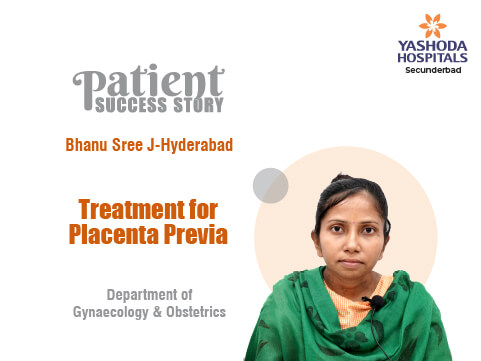
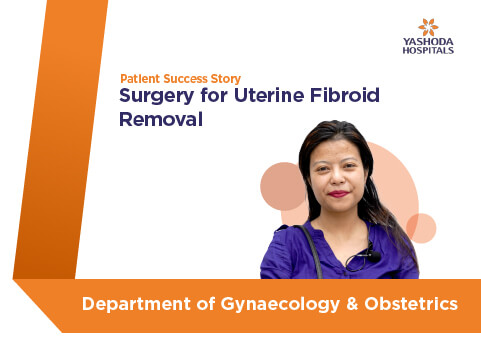
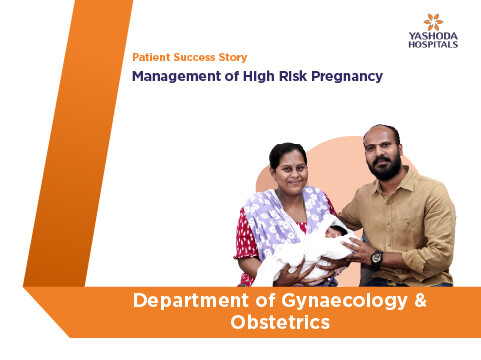
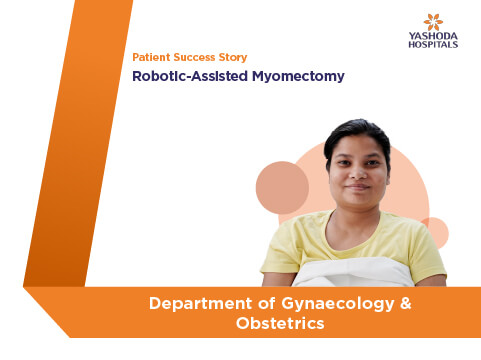
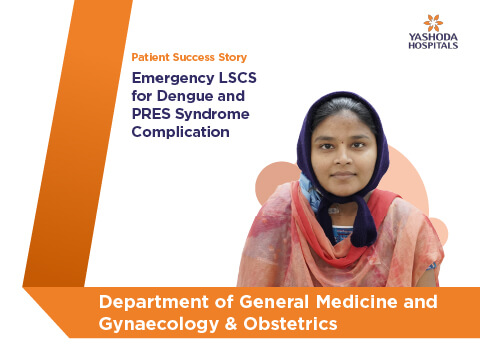



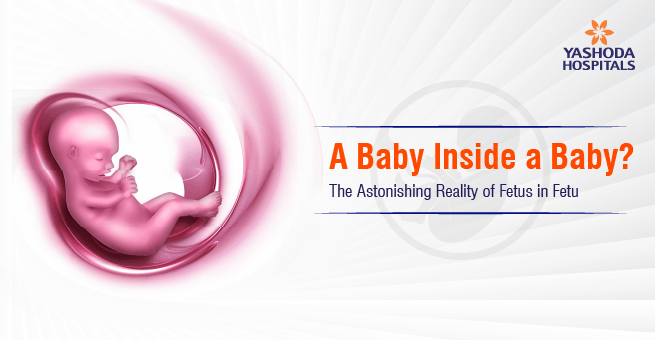
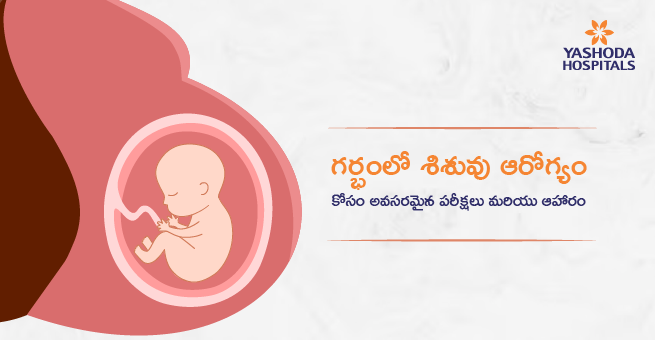


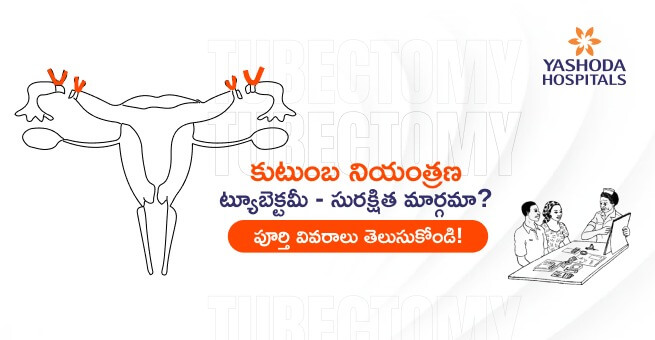
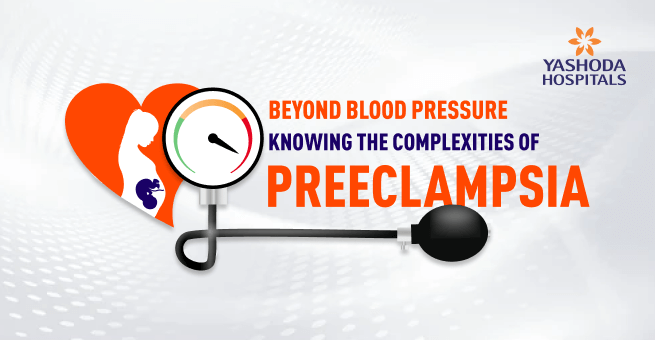
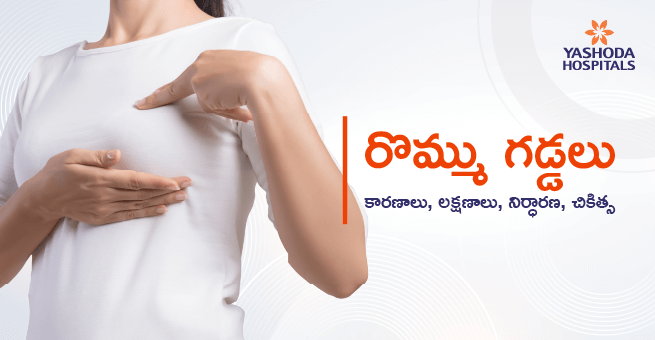
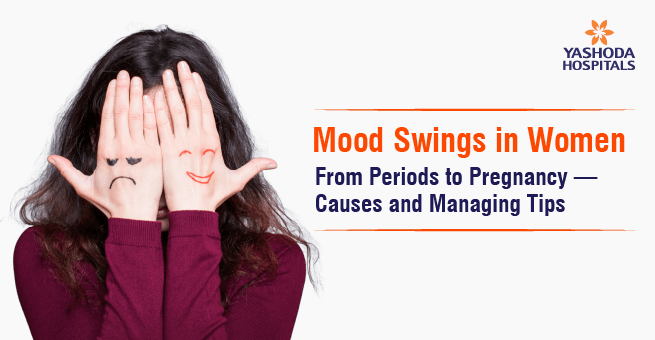
 Appointment
Appointment WhatsApp
WhatsApp Call
Call More
More